A Glimpse into a Day on a Dairy Farm
What does your daily routine look like? Since most of us may have nine to five type jobs, it can be hard to understand the daily routines of others like dairy farmers and their team of employees.
So, keeping that in mind and in honor of National Agriculture Day, here’s a glimpse into some of the many activities that take place on the country’s nearly 47,000 dairy farms.
3 a.m.: Milk the Cows
Depending on the farm, cows may be milked two to three times daily – every single day. (And no, farmers don’t have holidays, weekends, sick, or other days off.) Many farms use milking machines in buildings called milking parlors, and some farms have adopted robotic milker technology. This equipment allows cows to line up so they can be milked in stalls or a rotary system, which resembles a very slow-moving carousel that you may remember from your trip to the county fair. Those milking the cows clean and dry each cow’s udder before the milking machine gently and safely goes to work. The milk flows from the cow through cool, sanitized pipes and is stored in a refrigerated milk tank. It’s never touched by human hands to make sure it stays safe.

5 a.m.: Feed the Cows
Each morning, farmers provide fresh feed and water for their cows, who have access to it all day long. In fact, each cow drinks about a bathtub’s worth of water each day and eats about 100 pounds of feed each day, which can consist of hay, grain, vitamins, and more. Farmers work with dairy cow nutritionists to develop well-balanced meals for their cows.
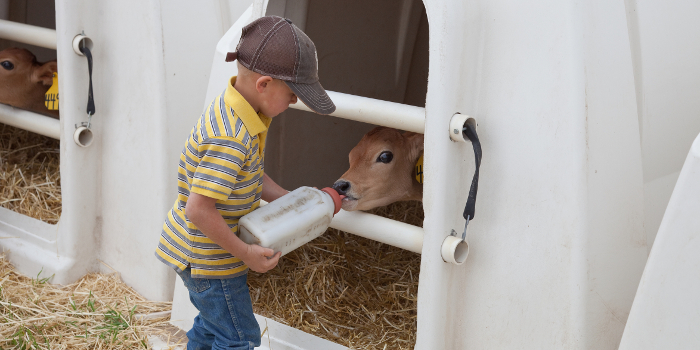
6 a.m.: Feed the Calves
Since calves are the future of a dairy farm, farmers take special precautions to make sure they’re safe and healthy. Calves receive milk a few times each day for their first few months, then they transition to a diet of hay and grain. Depending on the farm, they may each live in their own pens for the first few weeks or months to protect their health and ensure a healthy start. This also allows the farmer and their employees to closely monitor its behavior and how much a calf is eating.
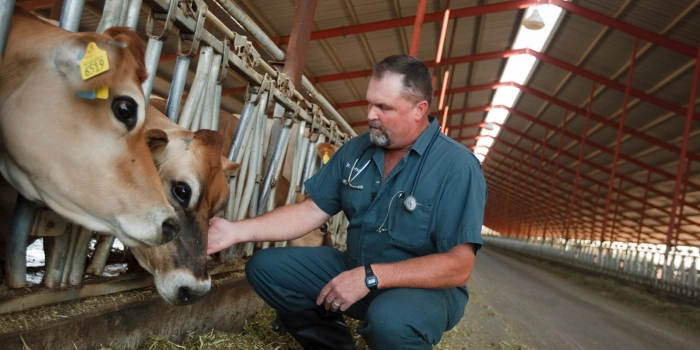
8 a.m.: Greet the Veterinarian
Besides being monitored daily for health issues by the farm team, every few weeks a large animal veterinarian visits to provide regular check-ups. They not only diagnose and treat illnesses with proper medications when a cow is sick, but more importantly, they also they work with the farmer and their team to update protocols to make sure that cows stay healthy.
10 a.m.: Spring Cleaning – Every Day
Dairy farmers know it’s important to provide cows with clean, dry, comfortable areas to rest in. Depending on where the farm is located, these areas may vary. On some farms, cows rest in barns. In warmer areas, cows may spend their days in open pens or pastures. No matter where the cows live, those working with them take special care to make sure their living areas are cleaned regularly.
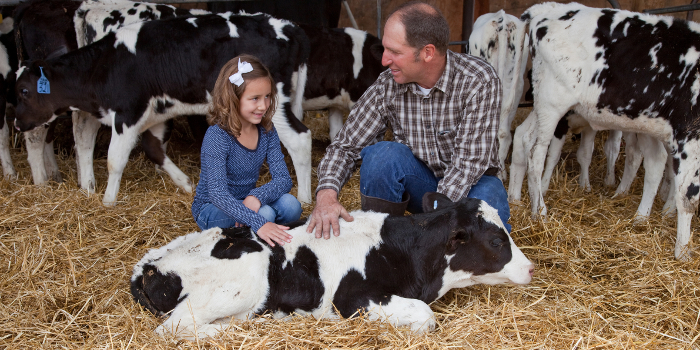
11 a.m.: Sharing the Dairy
Many farmers host tours or are active on social media sharing the daily happenings on their farm with photos and videos of calves being born, cows getting milked, how they take care of their land and beautiful sunrises.
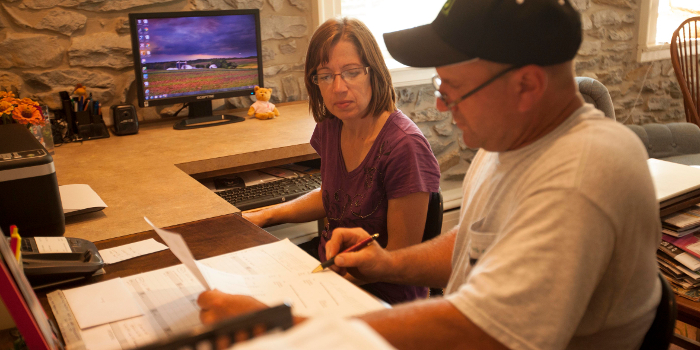
Noon: Connect with the Team
While employees communicate throughout the day, many farms may have an official time when the farm team connects. From talking about the upcoming tasks to discussing their cows and reviewing safety trainings, there’s always something to share.

1 p.m.: Preserve Natural Resources
Every day, dairy farmers work to preserve our natural resources and protect the land, air and water. Nutrient management plans guide the amount, source, placement, and timing of manure on fields. A natural fertilizer, recycled manure, helps crops grow and reduces the need for chemical fertilizers on the farm. To figure out the best plan for the farm’s crops, employees also meet regularly with soil experts.
3 p.m.: Milk the Cows
While this may be the second time today when a farm’s cows are milked, employees watch the cows around the clock to make sure they’re comfortable. For example, depending on the weather, employees may turn on misters and fans during warmer weather or put out extra bedding and use curtains to block winds in the winter.
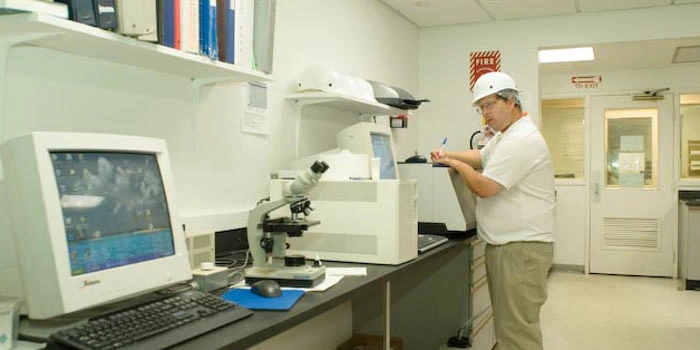
4 p.m.: Meet with Inspectors
Since dairy is one of the most regulated and inspected industries in agriculture, farmers work closely with federal and state government agencies, including inspectors from state regulatory agencies and milk processing plants that make unannounced visits to farms on a regular basis. These meetings are in addition to regular visits with other members of their team that includes soil conservationists and animal nutritionists.

5 p.m.: Feed the Calves
It’s time to feed the calves again! By checking in on them throughout the day, the farm team keeps close watch over each calf. During this time they may also provide additional bedding or even coats during cold weather.

7 p.m.: Keep or Update Records
When calves are born, they are given an identification number so the farmer can track her throughout her life. This includes birth date and health records, such as vaccinations, calving information, illness, and treatment. Farmers also capture the amount of milk each cow gives, and record information such as how much of one nutrient is applied to their fields, at what rate, volume, date, and more.
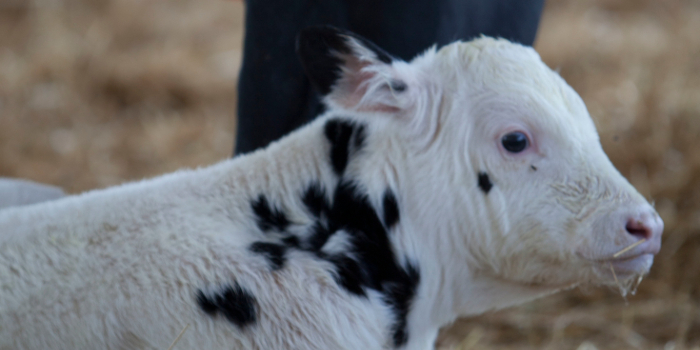
Midnight: Assist in a New Birth
Births can happen any time of day (or night) – the farmer and their team will make sure that they’re always ready to jump into action to take care of the cow and her calf. For example, when a cow goes into labor, the cow and her coming calf are closely monitored. If needed, help with birthing is readily available at all times from the team and, if necessary, a veterinarian – even in the middle of the night. Once born, calves receive a bottle of colostrum (the mother’s first milk), which is rich in fat, protein and natural immunity-building antibodies. They also receive vaccinations to make sure they get off on the right start.















